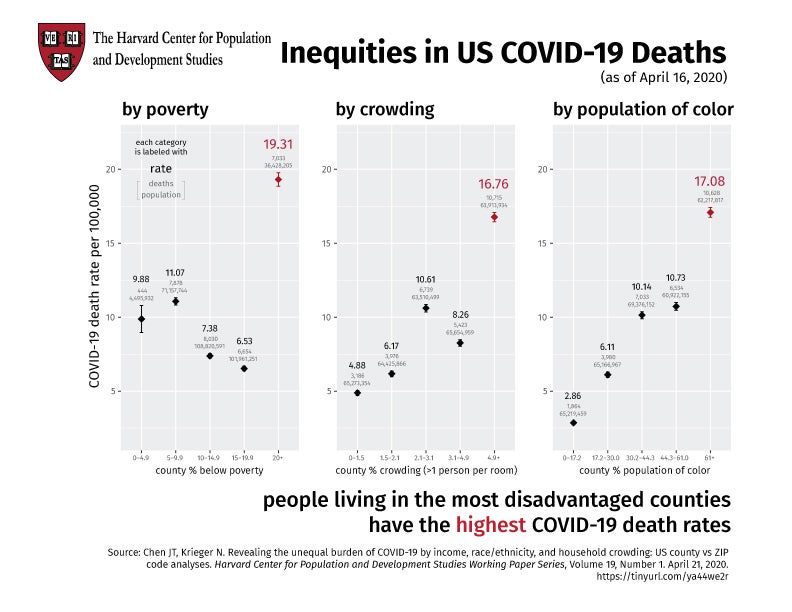Drs. Jarvis T. Chen and Nancy Krieger, Research Scientist and Professor of Social Epidemiology, respectively, have recently published a new working paper, “Revealing the unequal burden of COVID-19 by income, race/ethnicity, and household crowding: US county vs. ZIP code analyses”.
Abstract
No national, state, or local public health monitoring data in the US currently exist regarding the unequal economic and social burden of COVID-19. To address this gap, we draw on methods of the Public Health Disparities Geocoding Project, whereby we merge county-level cumulative death counts with population counts and area-based socioeconomic measures (ABSMs: % below poverty, % crowding, and % population of color, and the Index of Concentration at the Extremes) and compute rates, rate differences, and rate ratios by category of county-level ABSMs. To illustrate the performance of the method at finer levels of geographic aggregation, we analyze data on (a) confirmed cases in Illinois ZIP codes and (b) positive test results in New York City ZIP codes with ZIP code level ABSMs. We detect stark gradients though complex gradients in COVID-19 deaths by county-level ABSMs, with dramatically increased risk of death observed among residents of the most disadvantaged counties. Monotonic socioeconomic gradients in Illinois confirmed cases and New York City positive tests by ZIP code level ABSMs were also observed. We recommend that public health departments use these straightforward cost-effective methods to report on social inequities in COVID-19 outcomes to provide an evidence base for policy and resource allocation.
Citation
Chen JT, Krieger N. Revealing the unequal burden of COVID-19 by income, race/ethnicity, and household crowding: US county vs ZIP code analyses. Harvard Center for Population and Development Studies Working Paper Series, Volume 19, Number 1. April 21, 2020. https://tinyurl.com/ya44we2r




